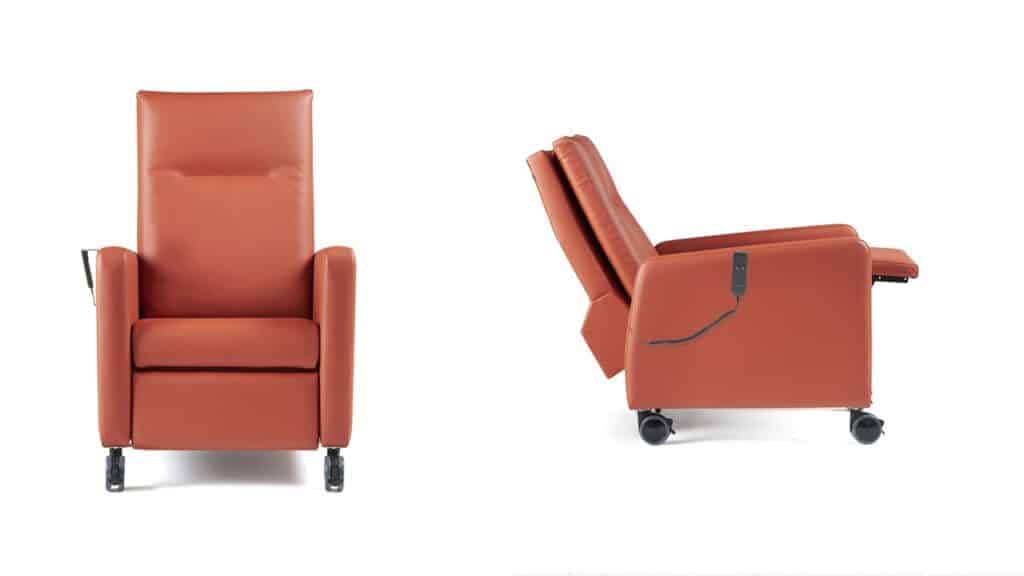Healthcare Furniture Specification Best Practices
What is Healthcare Furniture?
Healthcare furniture is crucial for healthcare facilities such as hospitals, medical offices, and clinics. It refers to a range of furniture pieces that are specifically designed to cater to the needs of patients and healthcare providers. The furniture is designed to be functional, durable, and easy to clean, ensuring it can withstand frequent use and remain hygienic.
Healthcare furniture includes hospital beds, medical carts, waiting room chairs, examination tables, and patient room furniture. These pieces are often designed to be adjustable and adaptable to meet the varying physical requirements of patients and the needs of medical professionals who require access to equipment or the patient. They can also be designed with specific safety standards, such as fire resistance, infection control, and ergonomic design.
The importance of healthcare furniture cannot be overstated, as it plays a vital role in creating a safe, comfortable, and functional environment for patients and healthcare providers. By providing appropriate furniture, healthcare facilities can enhance the patient experience, reduce the risk of injury, and facilitate efficient care delivery. Therefore, healthcare furniture must be carefully selected to ensure that it meets the unique needs of the healthcare setting while remaining cost-effective and aesthetically pleasing.
How to specify Healthcare Furniture?
When you are in charge of the Healthcare Furniture Specification process for a project, there are various factors to consider to ensure that the furniture is suitable for the needs of patients and visitors. Furniture must, of course, meet the commercial-quality standards but also the rigorous health requirements.
Furniture in healthcare facilities must complete rigorous testing. The challenge for designers when creating furniture for healthcare environments is to develop products that welcome and comfort the user but meet cleanability and durability requirements.
Furniture in healthcare facilities must complete rigorous testing. The challenge for designers when creating furniture for healthcare environments is to develop products that welcome and comfort the user but meet cleanability and durability requirements.
Based on our in-house Healthcare Furniture Expert’s vast experience working on several renowned projects in Ireland and the UK, these are five essential considerations for a successful Healthcare Furniture Specification process:
Why is it essential to prioritise Safety in Healthcare Furniture specifications?
One principal factor when specifying healthcare furniture is how safe the product is to use. An important consideration is the kind of patient the medical facility handles, as depending on the facility, different safety standards will need to be met.
Ideally, a portion of seating in the waiting room is bariatric for a typical adult care facility to ensure patients feel comfortable. One great option for this is Teal Whittle Bariatric Patient Chair.
However, this is contingent on the kind of patients. For example, when providing furniture for a geriatric or orthopaedic facility, it should be considered to support patients with hip replacement surgery, knee surgery, or mobility challenges such as arthritis. In this case, hip chairs, designed with a high seat that minimizes knee and hip movement, make getting in and out of their seat much easier for these users.
Chairs require a safe weight capacity in Healthcare Furniture Specification but should also possess a safe egress, which enables chairs to support the weight and motion required for a person to stand from the chair. Furniture with waterfall edges, for example, can improve comfort during prolonged periods of sitting and reduce the risk of injury for users with limited mobility by providing a smooth transition from sitting to standing and vice versa.
Ergonomics in Healthcare Furniture Specification
Ergonomics is a vital factor that makes furniture the most comfortable for patient use. Easily adjustable chairs to change heights, angles, and armrests will help accommodate patients of any size and need.
Also, ergonomics in Healthcare Furniture Specification increases flexibility and allows smooth movement and interaction between the patient and the caregiver. Implementing ergonomics in healthcare furniture design reduces the need to handle patients manually and the risk of injury. For example, ergonomic solutions like smooth recliners and optimised heights provide excellent care and protect patients.
When considering ergonomics in healthcare, it is crucial to remember that each patient is different. A patient’s height, weight, dexterity, and other elements contribute to their specific ergonomics. This is why it is essential to design for the middle of the probable patient range and provide a broad array of features, options, and accessories that enable hospital employees to customise solutions for their patients.
Benefits of Ergonomics in Healthcare Furniture
Enhancing ergonomics for hospital staff and patients means selecting furniture that promotes efficiencies in workflow while protecting employees from physical stress and potential injuries. For example, even simple solutions such as a chair selected with a slightly higher seat decrease the need to bend. This minor feature is very significant when considering the number of times a caregiver bends their back to help patients.
A perfect example of ergonomics in healthcare furniture is effectively implemented by Teal Healthcare, one of our flagship providers, and their Astra Galaxy Electric Recliner, which allows caregivers to elevate easily and recline patients. Reducing the need to handle the patient manually helps decrease the risk of injury. A broad range of options is available to customise solutions for their patients.
Enhancing ergonomics for hospital staff and patients means selecting furniture that promotes efficiencies in workflow while protecting employees from physical stress and potential injuries. For example, even simple solutions such as a chair selected with a slightly higher seat decrease the need to bend. This minor feature is very significant when considering the number of times a caregiver bends their back to help patients.
Ensure Cleanability in Healthcare Furniture Specification
It is crucial to consider cleanability when working on the Healthcare Furniture Specification process to ensure the safety of patients and visitors, as well as the performance and durability of the materials. Here are some aspects to pay attention to ensure cleanability in healthcare furniture:
- Make sure that your healthcare furniture includes a clean-out space between the seat and back of the chair to ensure fewer points for bacteria growth to accumulate and allow the chairs to be easily cleaned.
- Check that the healthcare furniture design is made for the staff to never put their hands in areas where it’s not clear to see what they may be touching, as it’s a potential health risk.
- Chairs should be layered with a single material to eliminate crevices and cracks and should be free of additional layers that would make them difficult to clean.
- The back of healthcare chairs should be smooth and straightforward to wipe, allowing for a 360-degree wipe.
- All the products are made using easily cleaned materials. The finishes must enable easy cleaning and withstand heavy-duty use.
- Wood finishes should be sealed using a high-quality clear lacquer, which is durable and incorporates antimicrobial agents that prevent the growth of microorganisms.
- Fabric selection is fundamental in the battle against healthcare-associated infections (HCAIs). High-performance vinyl is ideal in extreme hospital environments to implement antimicrobial and antifungal protection against bacteria and connected odours, infections, and cross-contamination. Also, the fabric used on healthcare furniture must not absorb spills to be easily wiped clean, especially in high-risk infection control areas.
Level Up Durability in Healthcare Furniture
There is no question that durability will always be a critical factor in selecting any furniture, but it becomes an even more important factor in healthcare environments. Every selection must not only stand up to continued patient use but also rigorous cleaning that is often done with harsh agents.
When specifying durable furniture, the facility’s regular patients must be considered. For example, in the majority of facilities, the environment should be furnished with products that have metal-to-metal connections, as these are the most durable. Also, when selecting desks and tables, it is essential to acquire furniture that won’t scratch easily, while seating should be moisture-resistant and withstand frequent wear in waiting and exam rooms.
Design Aesthetics in Healthcare Furniture Specification
Healthcare aesthetics may not seem crucial, but studies indicate they have an essential role. Solutions such as Teal’s TSRK21 Roku® Tub Chair, exclusively distributed in Ireland by Walls to Workstations, are specifically designed for high-risk environments. The hexagonal shape offers a complete anti-ligature and concealment-free design with rounded edges and no sharp corners. This feature means providing patients and visitors of challenging facilities like mental health centres with safe, relaxing furniture suitable for indoor and outdoor use, conceived as a stress-relief booster through its visuals and textures.
Healthcare environments must be clean, safe, welcoming, and relaxing. It’s demonstrated that aesthetically pleasing furniture aids in increasing the morale of patients, helping them to relax and recover, and ensuring visits are as comfortable as possible, regardless of the time spent in the facilities.
Let's continue the conversation
Get in touch and schedule a consultation with our frontline specialists
Take me there



